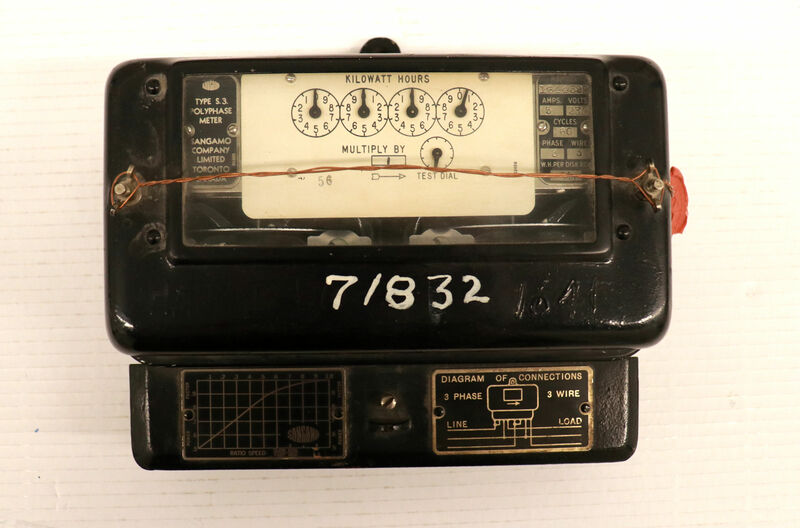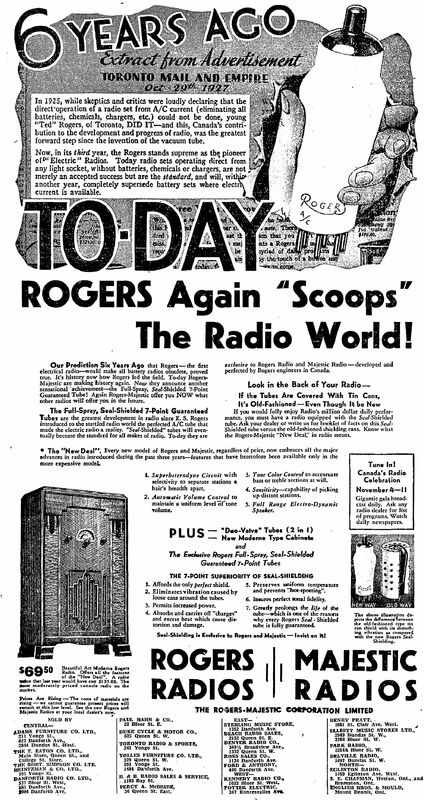Introduction
by Victoria JL Fisher
The period between the First and Second World Wars was a period of dramatic change in Canadian science and manufacturing, centered on the economic powerhouses of Quebec and Ontario.
The First World War
Prior to the war, both the US and Canada relied heavily on European industry, especially in Germany and the UK, to produce high-end and precision products. The war made German products inaccessible, and diverted most UK precision and scientific manufacturing to the war effort.
Canadian and US manufacturing scrambled to fill this gap. First, in Canada, to supplement the UK war effort. Although the precision industry in Canada was still very small, existing companies did produce equipment intended for war. This included optical instruments by companies like Consolidated Optical.
More strikingly, Canadian and US companies began to manufacture products they had previously imported. Although many skilled workers—like Thomas Pocklington who would go on to found the Thomas Pocklington Instrument Co. Ltd.—left their civilian jobs to work in wartime positions, they returned with increased skills.
At the same time, the war brought science, engineering and medicine to the forefront of people's minds. Many more people sought training in these fields; others brought wartime skills to civilian companies. Markets for scientific equipment subsequently grew. Companies like J.F. Hartz filled the need for medical equipment across the country while also supplying specialised medical and biological apparatus and supplies to universities and high schools.
All these changes grew companies’ manufacturing capabilities and the skills of their employees, putting Canadian precision industry in a strong position to begin the 1920s.
Electrical Protectionism
In 1915, the Canadian federal government strengthened the country’s protectionist economic policies—in part, to raise money from imports. Importantly, this included electrical instruments, including meters, imported from the United States. (The Customs Tariff War Revenue Act, 1915) This shift had a profound effect on Canadian industry. First, it provided protection for existing Canadian-based (although not necessarily Canadian-owned) companies such as Northern Electric against the powerhouse of US production. Second, it encouraged US companies to establish Canadian branches that actively engaged in Canadian manufacturing, a move which Illinois company The Sangamo Electric Co. took in founding a factory in Toronto.
With electrical instruments also in high demand, by 1928, electrical apparatus was the tenth most valuable manufacturing industry in the country, with Toronto as the manufacturing hub (Carvalho 1930). Even if companies were branches of foreign companies, local manufacture went hand-in-hand with design and development of electrical instruments, thus fostering Canadian innovation and invention. This established a culture of electrical expertise and development in the country that laid the groundwork for the growth of companies through the Second World War and beyond.
Invention and Innovation
Not all important and useful technological developments are new inventions. Many Canadian precision manufacturing companies thrived on their ability to improve and develop existing products, sometimes for new or different markets, and sometimes to do something better than before.
Rogers-Majestic Corp. did not originate the concept of applying shielding directly to the glass envelope of a vacuum tube to reduce annoying noise; this occurred in Germany. However, the company was the first to develop a factory process that made the process accessible to a producer of commercial radios. To this was far from trivial. Skilled company engineers were required to consider numerous technical and scientific factors in their redevelopment of the tube in order to make it suitable for manufacture on their machine.
Similarly, The Sangamo Electrical Company of Canada earned a corner of the market by developing the S-3 watt-hour meter, which was the industry standard for thirty years. This trend of development continued after the Second World War, with companies like Campbell Scientific (Canada) and Ferranti-Packard finding a niche in the precision manufacturing industry through the refinement of products.
The Second World War
The onset of World War II saw a significant uptick in production in Canada, as precision manufacturers retooled for the war effort. Already a huge plant, the Northern Electric factory in Montreal was a major contributor of electrical equipment and projects during the 1940s. The Ontario Hughes-Owens company in Ottawa, previously making survey instruments, expanded dramatically to manufacture navigation instruments, mostly intended for use aboard ships. In 1940, The Thomas Pocklington Instrument Co. Ltd. acquired a new circular dividing engine, allowing the company to make instruments with circular measuring elements; this may have been a move to expand the companies production abilities at a time when, as with the First World War, much production was diverted to the war effort.
The war, and the years immediately following, saw major changes in precision instrumentation production in Canada, and also contributed to more ambitious activity in post-war period. For example, Northern Electric founded a new plant at Belleville Ontario in 1947 and wartime research into nuclear technology led to the foundation of the Chalk River nuclear research facility, where researcher and instrument designer Hugh Carmichael worked.
Selected Sources
Carvalho, H.N. The Manufacturing Industries of the British Empire Overseas - Part 1 - Canada. (Erlangers Ltd, 1930)


